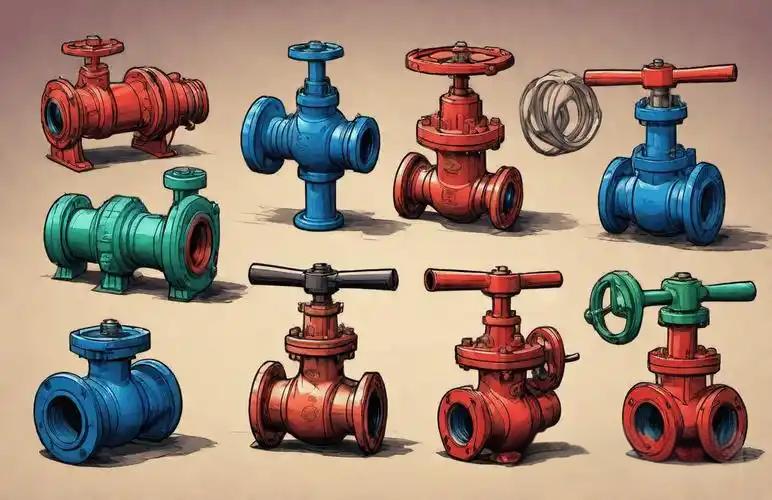First, the valve heat treatment process
Heat treatment is a kind of heating, insulation and cooling steps, change the internal structure of the valve material, and then enhance its mechanical properties of the process. Valve heat treatment is mainly divided into two categories: preparatory heat treatment and final heat treatment.
- Preparatory heat treatment
Annealing: the valve material is heated to above the austenite transformation temperature, and held for a period of time after slow cooling. Incomplete annealing helps to eliminate the internal stresses produced by forging, reduce the hardness, while improving the toughness. While the complete annealing can refine the grain, improve machinability, and prepare for the subsequent quenching process.
Normalizing: The valve material is heated above the critical temperature, held for a period of time and then rapidly cooled. This process is designed to improve the hardness and wear resistance of the material.
Aging treatment: mainly used to eliminate internal stresses generated in the manufacture of blanks and machining to ensure stable machining accuracy of the parts.
Tempering: A high-temperature tempering treatment is carried out after quenching to obtain a homogeneous and detailed tempered sohnite organization. This step provides preparation for subsequent surface hardening and nitriding treatment to reduce distortion. - Final Heat Treatment
Quenching: The valve is heated to a certain temperature and then cooled rapidly to form a high hardness martensitic organization on its surface. Quenching is divided into surface quenching and overall quenching, of which surface quenching is more widely used.
Tempering: The quenched valve is heated to a temperature below the phase transition temperature, held for a certain period of time and then cooled to room temperature at a certain rate. This process is designed to eliminate the internal stresses produced by quenching and improve toughness.
Nitriding treatment: Nitrogen atoms penetrate into the valve surface to form a layer of nitrogen-containing compounds. Nitriding layer can significantly improve the valve surface hardness, wear resistance, fatigue strength and corrosion resistance.
Second, the valve surface treatment process
Surface treatment is designed to improve the corrosion resistance of the valve, wear resistance and aesthetics. The following are common valve surface treatment methods: - Mechanical descaling and cleaning
Sanding and brushing: Use sandpaper, wire brush and other tools to sand and brush the valve surface to remove rust and dirt.
Sandblasting: Use compressed air to spray abrasives onto the valve surface at high speed to effectively remove surface dirt and oxidized layer. - Chemical rust removal and cleaning
Acid washing: use acid solution (such as hydrochloric acid, sulfuric acid, etc.) to soak or spray the valve to remove rust and oxides through chemical reaction. After cleaning needs to be thoroughly rinsed to avoid residues on the valve body to cause further corrosion.
Alkaline cleaning: the use of alkali solution to clean the valve surface, remove grease and dirt.
Organic solvent cleaning: use gasoline, alcohol and other organic solvents to clean the valve surface, remove grease and impurities. - surface coating treatment
Spray anti-corrosion paint: spray a layer of anti-corrosion paint on the surface of the valve to form a protective film to prevent the valve body from rusting in contact with oxygen and moisture in the air.
Plastic spraying: spray plastic powder evenly on the metal surface of the valve, after high temperature baking to form a dense layer of coating.
Grease: Apply a layer of grease on the surface of the valve to form a lubricating protective film, reducing the valve body and the oxygen and moisture in the air in direct contact with the opportunity. But need to pay attention to the choice of grease and the amount of use, to avoid affecting the operating performance of the valve.
Hot dip galvanizing: the valve is immersed in molten zinc liquid, so that the zinc layer and the valve surface closely combined to form a dense layer of zinc protection layer, improve the corrosion resistance of the valve. - Imposed protective layer
Installation of protective cover: install plastic cover, rubber cover and other protective cover on the outside of the valve to isolate the valve body from direct contact with the external environment and prevent rusting.
Winding anticorrosive tape: Wind a layer of anticorrosive tape on the surface of the valve (such as polyethylene anticorrosive tape, glass tape, etc.) to form a protective layer and improve the corrosion resistance of the valve.
Other rust prevention methods
Passivation: through chemical or electrochemical methods to make the valve surface to form a dense layer of passivation film, improve corrosion resistance.
Cathodic protection: the use of applied current or sacrificial anode, so that the valve becomes the cathode of the corrosion battery, thus preventing corrosion from occurring. This method is especially suitable for buried or underwater use of the valve.
We hope that this guide will help you better understand the heat treatment and surface treatment process of the valve.



